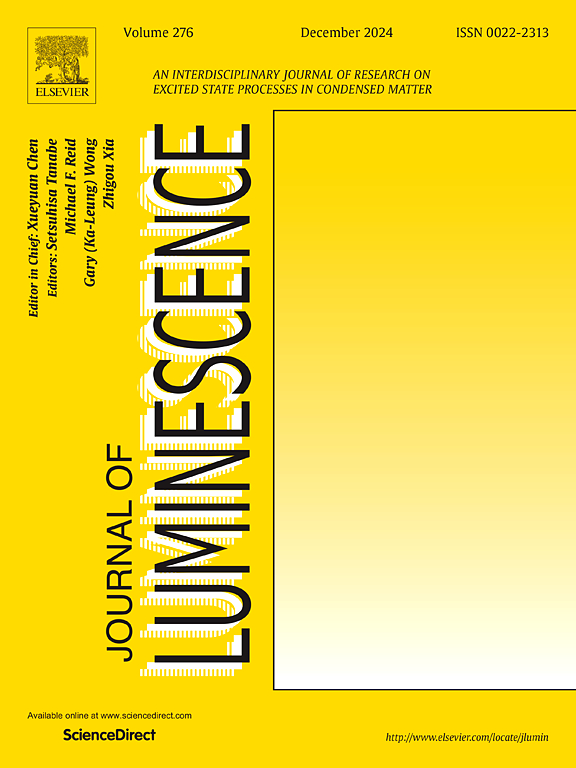Camphor-modified porphyrins: Near-infrared CPL emission at aggregation states
IF 3.6
3区 物理与天体物理
Q2 OPTICS
引用次数: 0
Abstract
The near-infrared dyes with high CPL properties in aggregated state were important but rarely reported. In this work, two camphor-modified porphyrins were designed and synthesized in high yields by the simple procedures. They exhibited good CPL properties in both solution and aggregation states. The absolute fluorescence quantum yields attained 0.16 and 0.18 in solid films. The biggest glum values of were as high as 2.08 × 10−2 at 758 nm in THF/H2O (5/95) and 1.70 × 10−2 at 736 nm in solid state. This work suggested that the large volume chiral camphor groups not only have good chiral transfer effect for producing CPL emission for porphyrin moieties, but also possess large steric hindrance to reduce ACQ effect for achieving excellent CPL luminescence in aggregated states.
樟脑修饰卟啉:聚集态的近红外CPL发射
聚类态高CPL性能的近红外染料是重要的研究对象,但鲜有报道。本文设计并合成了两种樟脑修饰的卟啉,收率高,工艺简单。在溶液态和聚集态均表现出良好的CPL性能。固体薄膜的绝对荧光量子产率分别为0.16和0.18。在THF/H2O(5/95)中,在758 nm处的最大glum值高达2.08 × 10−2,在736 nm处的最大glum值高达1.70 × 10−2。本研究表明,大体积的手性樟脑基团不仅具有良好的手性转移效应,使卟啉基团产生CPL发光,而且具有较大的空间位阻,可以减少ACQ效应,从而在聚集态下获得优异的CPL发光。
本文章由计算机程序翻译,如有差异,请以英文原文为准。
求助全文
约1分钟内获得全文
求助全文
来源期刊

Journal of Luminescence
物理-光学
CiteScore
6.70
自引率
13.90%
发文量
850
审稿时长
3.8 months
期刊介绍:
The purpose of the Journal of Luminescence is to provide a means of communication between scientists in different disciplines who share a common interest in the electronic excited states of molecular, ionic and covalent systems, whether crystalline, amorphous, or liquid.
We invite original papers and reviews on such subjects as: exciton and polariton dynamics, dynamics of localized excited states, energy and charge transport in ordered and disordered systems, radiative and non-radiative recombination, relaxation processes, vibronic interactions in electronic excited states, photochemistry in condensed systems, excited state resonance, double resonance, spin dynamics, selective excitation spectroscopy, hole burning, coherent processes in excited states, (e.g. coherent optical transients, photon echoes, transient gratings), multiphoton processes, optical bistability, photochromism, and new techniques for the study of excited states. This list is not intended to be exhaustive. Papers in the traditional areas of optical spectroscopy (absorption, MCD, luminescence, Raman scattering) are welcome. Papers on applications (phosphors, scintillators, electro- and cathodo-luminescence, radiography, bioimaging, solar energy, energy conversion, etc.) are also welcome if they present results of scientific, rather than only technological interest. However, papers containing purely theoretical results, not related to phenomena in the excited states, as well as papers using luminescence spectroscopy to perform routine analytical chemistry or biochemistry procedures, are outside the scope of the journal. Some exceptions will be possible at the discretion of the editors.
 求助内容:
求助内容: 应助结果提醒方式:
应助结果提醒方式:


